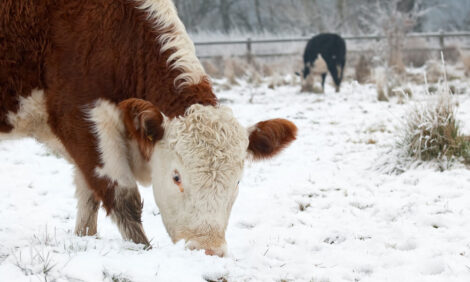



Beef Quality Assurance Takes Another Step Forward
CENTENNIAL — At one point on its 25-year journey to a standardized Beef Quality Assurance (BQA) program, the beef checkoff made a key philosophical shift from correcting violations to improving product quality. Since then, that proactive stance has evolved into a program of sound, science-based production practices aimed at improving consumer satisfaction and increasing market opportunities for beef producers.The program’s foundation is the BQA Strategic Plan 2010, which was unveiled at the cattle industry’s annual summer conference here today. As a beef checkoff initiative, the plan still must be approved for funding by the Beef Promotion and Operating Committee in September. If accepted, it will become the first formal long range plan to guide national BQA efforts.
“BQA is just good business,” said Cattlemen’s Beef Board member Carl Crabtree, an Idaho cattleman and chairman of the Beef Quality Assurance Advisory Board.
A formalized BQA plan will unite the aims of all the existing state Beef Quality Assurance programs. The BQA mission is to maximize consumer confidence in beef and give producers a “best practices” road map to increased profitability. The program is guided by three fundamental principles: (1) producers can make a difference; (2) quality is the producer’s job, not someone else’s; and (3) product safety and wholesomeness is everyone’s business.
“As a dairy farmer, I realize virtually every cow in my herd has the potential to be found on the meat counter at my local grocery store. It is my responsibility to keep that in mind from the day that calf is born until the day she is culled from my milking herd,” said Jim Docheff, owner of Diamond D Dairy near Longmont, Colo.
“Once that animal leaves here, it is a reflection of the quality of job we have done on our farm the past few years. Though my total income from beef is only 5 percent of my gross income, it’s critical that we work together to keep the consumer coming back to the beef case,” he added.
BQA strategic priorities for 2008 include development of a national standards manual; pilot programs; and QA initiatives for dairy and market cows and bulls. Architects of the national guidelines also want to give state beef councils the flexibility to move beyond national standards to take advantage of individual state needs and market opportunities.
In 1986, the Beef Safety Task Force formed to target real and perceived safety issues. A critical concern at that time was the presence of chemical residues, showing up in as many as 4 percent of beef samples taken. A group representing every production sector and the pharmaceutical industry met to resolve the problem through practical production measures and stakeholder education. Two years later, residue rates in samples dropped to zero. And they stayed there, convincing industry leaders that stakeholder education was a critical link in the chain to deliver wholesome, delicious beef to consumer tables.
The task force became today’s Beef Quality Assurance Advisory Board, signaling that key shift from just troubleshooting to actively identifying and addressing quality problems before customers experience them. The advisory board realized the industry needed to self-audit for quality.
The 1991 audit, the first comprehensive audit of beef carcasses, determined the industry lost nearly $280 due to quality defects for the average fed animal marketed. The majority of loss was due to fat, lack of marbling and other defects, including injection-site lesions. Similarly, the 1994 market cow and bull audit revealed carcass defects, many of which could be avoided by using BQA pre-harvest management practices. With improved oversight of these animals, the audit said producers could recoup about $70 a head for each marketed animal.
A number of individual BQA programs have been developed across the country, through state beef councils and other entities. So it was good news when the 2005 National Beef Quality audit revealed, among other positive numbers, that 77 percent of carcasses being processed had no defects and that the incidence of injection site blemishes decreased dramatically. The remaining animals did, however, present defects from quality grade, yield and weight; the audit recommended finding ways to eliminate these problems before the next audit in 2010.
TheCattleSite News Desk


